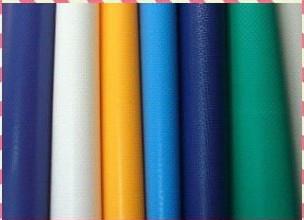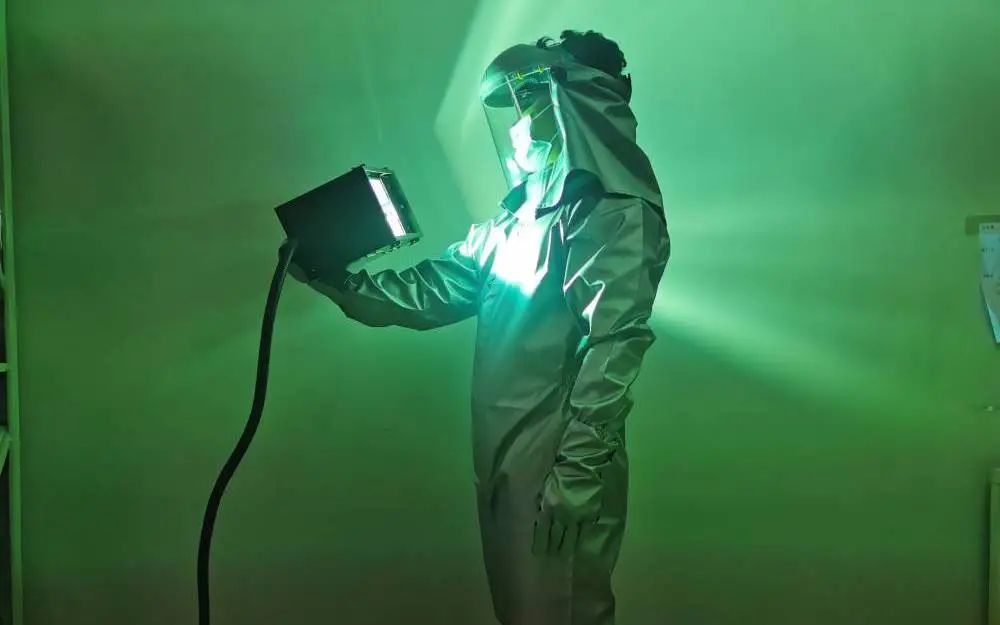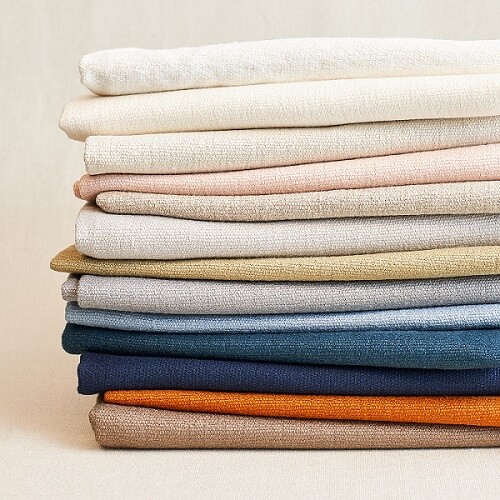Coated fabric: It is a kind of fabric treated by special technology. It can…
Coating Fabric Finishing: Function, Classification, Process and Testing
What is coating fabric? Coating fabric is a finishing process technology that uses a special process to coat one or more layers of coating adhesive with special functions on the basis of fabric to form one or more layers of film on the surface of the fabric. Coating adhesive is a kind of polymer compound with film-forming performance, and different types have different performances.

Table of Contents
★ Functional requirements of coating fabrics
The coating can not only improve the feel, appearance and style of the fabric but also increase the performance of the fabric so that the fabric has special functions such as water resistance, water penetration resistance, air and moisture vapor permeability, flame resistance and light blocking reflection.

The coating fabric is widely used in down jacket rainproof pike, jacket, tent, shoes and socks, curtain, luggage and advanced waterproof and moisture permeable function of ski shirt, mountain climbing clothes, windbreaker, etc. It can also be applied to sailing, fishing, offshore oil well, transportation and other fields.

From the fashion market, many casual clothes are made of coating fabrics, the main styles are undershirts, jacket shirts, using PU coating, the texture is relatively light and thin. The color of coating fabric tends to be light and elegant, with light blue, light gray, light purple, etc. The biggest advantage is that it feels smooth, rainproof and easy to clean. The consumer group of coated clothing is mainly young men and women and high school students, this kind of clothing is not expensive, the style changes a lot, catering to the consumer characteristics of young people.
★ Classification and characteristics of coating fabric
To get a comprehensive understanding of coating fabrics, we need to analyze fabric coating finishing from three aspects: chemical structure, using medium and technical process.
Classification by chemical structure
- Polyacrylate (PA)
- Polyurethanes (PU)
- Polyvinyl chloride (PVC)
- Organic silicon type
- Synthetic rubber (such as neoprene)
In addition, there are polytetrafluoroethylene, polyamide, polyester, polyethylene, polypropylene and protein type, the most widely used is PA, PU, PVC three major types of coatings.
PU coating, soft and elastic, high strength, moisture permeability and breathability, wear resistance, moisture resistance, dry cleaning resistance, but higher cost, poor weather resistance, easy to yellow and brittle, encounter water, heat, alkali will be hydrolyzed, commonly used in clothing, interior decoration cloth.
PA coating, transparent, not easy to yellow, good weather resistance, conducive to the production of colored coating products, in addition to good resistance to washing, strong adhesion, lower cost. However, it has poor elasticity, easy to crease, poor surface finish, and difficult to adjust handfeel. It is commonly used in umbrella cloth, raincoat, anti-feather cloth, etc.
PVC coating, when the plasticizer content is high, it shows high elongation, softness, good feel and abrasion resistance; when the plasticizer content decreases, its softness and elongation decrease, while hardness, tensile strength and abrasion resistance increase. PVC coating is inexpensive, but the heat resistance is poor, with a softening point of 80℃ and decomposition and discoloration starting at 130℃. PVC coating is often used for raincoats, etc.
Classification by the different media used
1 Solvent type media
Solvent type media has the advantages of high water pressure resistance, good film formation, fast drying, low solid content, but at the same time has the following defects: strong permeability in the fabric, coarse and hard feel, high toxicity, easy to catch fire, the need for solvent recovery devices, and high recovery costs.
2 Aqueous type media
Compared with solvent type media, aqueous type media is non-toxic, non-flammable, safe, low cost, does not require recycling, can manufacture thick coated products, conducive to the production of colored coating products, good hydrophilic. The disadvantages are low water pressure resistance, slow drying, and difficult adhesion on filament fabrics.
Classification by different coating process
According to the different coating process, there are dry coating adhesive and wet coating adhesive, low temperature cross-linked coating adhesive and high temperature cross-linked coating adhesive. Dry coating adhesive and low temperature cross-linked coating adhesive are the trend of future development of coating fabrics because of their simple coating process, low baking temperature and energy saving.
What are the common coating types?
- PA coating, also called AC coating adhesive, i.e. acrylic coating, is the most common type coating by far, which can increase the hand feeling, windproof and drapey after coating.
- PU coating, i.e. polyurethane coating, the fabric feels rich and elastic after coating, and the surface has film feeling.
- Down-proof coating, which can prevent down from running, suitable for making down jacket fabric. But now the PA coating has the water pressure requirement is also called down-proof coating.
- PA white glue coating, that is, a layer of white acrylic resin coated on the surface of the fabric, which can increase the coverage of the fabric and make the fabric color more vivid.
- PU white glue coating, that is, a layer of white polyurethane resin coated on the surface of the fabric, which effect is basically the same as PA white glue, but PU white glue coating has a richer feel, more elasticity and better fastness of the fabric after application.
- PA silver glue coating, that is, a layer of silver glue coating on the surface of the fabric, so that the fabric has the function of blackout, radiation protection, generally used in curtains, tents, clothing.
- PU silver glue coating, the basic function of the same PA silver glue coating. But PU silver coated fabric has better elasticity, better fastness, for tents and other fabrics requiring high water pressure, PU silver coating is better than PA silver coating.
- Pearl coating, there are silver white and colorful, the surface of the fabric becomes pearl-like luster, made into a very beautiful garment, flat and shiny, better sense of film, has the “pearl skin film” reputation.
- Oil coating, smooth and shiny surface after coating, generally suitable for tablecloths and tablecloths.
- Silicone high elasticity coating, for thin cotton fabric is very suitable for shirt fabric, feel rich, very crisp and elastic, with strong resilience, anti-wrinkle. For thick type fabric, good elasticity and good fastness.
- Skin film coating, by calendering and coating the surface of the fabric, the surface of the fabric forms a skin film, completely changing the style of the fabric. Generally the skin film surface is made into the front of the garment, with the style of leather jacket.
- Flame resistance coating, by padding or coating the fabric, makes the fabric with flame retardant effect. And can be painted in color or silver on the surface of the fabric. Generally used for curtains, tents, garments, etc.
- Teflon tri-proof coating, the fabric is treated with DuPont Teflon tri-proof coating to make the fabric water resistant, oil resistant and stain resistant.
- Anti-UV coating, UV-resistant treatment of the fabric, so that the fabric has the function of blocking UV penetration. Generally light colors are more difficult to do, and dark colors are easier to meet the standard.
- Cotton fabric coating, such as cotton scraping color coating, paper sense coating, wash old coating, hidden grain coating, oil sense wax sense coating, color leather film coating, etc.
★ The finishing process of coating fabric
The fabric coating process is to use organic solvents or water to dissolve the coating gum particles into a fluid state and then use a squeegee or roller to evenly apply on the ordinary fabric, after natural evaporation or baking to make the water or organic solvents in the dissolved gum particles evaporate out so that the surface of the fabric also formed a coating film.

Coating process: direct coating, hot-melt coating, adhesive coating, transfer coating
Direct coating
Direct coating is a method of applying coating agent directly and evenly to the surface of fabric by physical and mechanical methods to form a film. According to the different methods of film formation, it is divided into dry coating and wet coating.
Dry coating is to dissolve the coating agent in water or organic solvent, add certain auxiliaries to make coating slurry, directly and evenly coated on the fabric, and then heated and dried, so that the water and solvent evaporate, and the coating agent forms a tough film on the surface of the fabric through its own cohesion or cross-linking of resin.
Wet coating refers to the coating agent evenly coated on the fabric, through the water solidification bath, forming a porous film on the fabric, and then after washing and rolling, to make the coated fabric.
Hot-melt coating
Hot-melt coating is a coating process in which thermoplastic resin is heated and melted, coated on the base fabric, cooled and polished, and thus adhered to the surface of the base fabric.
Adhesive coating
Adhesive coating process is to laminate resin film with adhesive coated base fabric and bond it into one by pressing, or to contact resin film with high temperature hot melt rollers to melt the surface of the resin film and then laminate it with base fabric and then bond it into one by pressing. Adhesive coating is usually used for finishing decorative fabrics, floor coverings, etc.
Transfer coating
Transfer coating is first applied to the silicone treated transfer paper with a coating pulp, then laminated with the base fabric, dried, flattened and cooled under very low tension, and then separate the transfer paper and the coated fabric. Transfer coating is mainly used in the coating process of non-woven fabrics and light fabrics and knitted fabrics, which are sensitive to tension.
★ Testing of coating fabrics
The testing of coating fabrics is mainly carried out from two aspects: functional testing and durability testing.
Functional testing is for the specific function of the fabric, such as waterproof test, water pressure resistance test, breathability test, flame resistance test, etc. It is the basis for judging whether the fabric coating is qualified or not.
Through air permeability tester and hydrostatic head tester, etc., we test the functionality of coating fabrics such as air permeability and water penetration resistance performance.
Flame resistance test, through the flammability chamber, is used to measure the flame resistance of textiles, products like children’s sleepwear, evening dress of children, adults, special industrial wearings, curtain and etc.
Durability testing is to test the durability of fabrics, such as simulating the ageing resistance of fabrics in various light and rain environments or simulating the abrasion resistance of fabrics, which is the basis for judging the service life of coating fabrics.

Light & weather fastness tester and universal wear tester to test the light ageing resistance and abrasion resistance of coating fabrics.
Summary of finishing of coating fabric
Unlike padding, the coating is carried out on the surface of the fabric, the solution does not penetrate into the fabric, the process used is mainly rolling, coating, drying and baking, generally without washing, which can save a lot of energy and water, is conducive to environmental protection. In addition, the fabric coating requirements for the base fabric is low, and the fiber can not be restricted by species.
The coating process is a more important process in the textile finishing process, the future development direction of fabric coating is: to the direction of environmental protection and energy saving, to the advanced special function type development and to the direction of multi-functional type development.






This Post Has 0 Comments